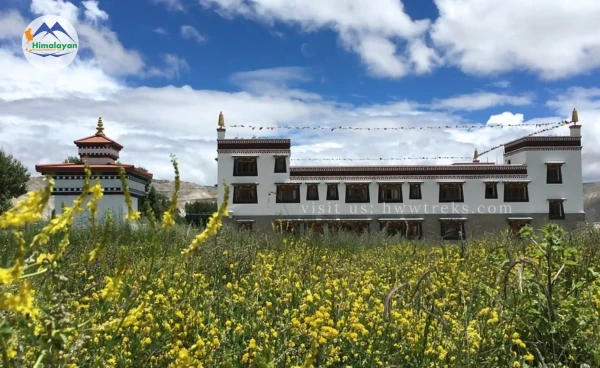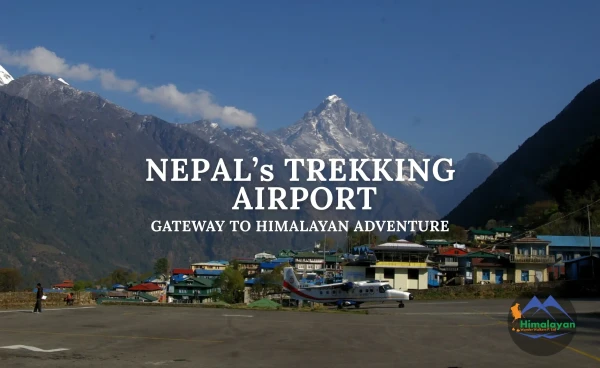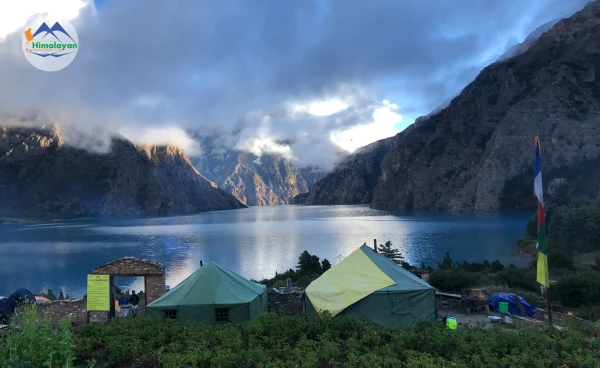- 09/26/2025
- Tags: Kanchenjunga
- Himalayan Wander Walkers
Trekking To Kanchenjunga - Eastern Nepal
The Kanchenjunga (8586 m) straddles the border between Sikkim state in India and eastern Nepal in the Taplejung district. There are only two taller mountains than Kanchenjunga in the world, which are Everest (the highest one) and K2 (the second highest). The third-highest mountain, Kanchenjunga, was first summited by a British team led by Charles Evans in 1955. There are very few climbers for the Kanchenjunga expedition compared with other massive peaks of the world because the Sikkimese worshipped it as a guardian spirit.
The name Kanchenjunga is derived from the four Tibetan words (they are: Gangs, Chen, mzod, and lnga) which means “the five treasures of the snowy mountains." Kanchenjunga Main (8,586 m), Yalungkang (8,505 m), Kanchenjunga West (8,420 m), and Twin Peaks (both 8,476 m) represent the five snowy treasure peaks because Sikkimese and Tibetan believe that the Kanchenjunga ranges have five important peaks.
Contents [hide]
- Trekking in Kanchenjunga Region
- Facts of Kanchenjunga Trek
- Highlights of trekking in the Kanchenjunga Area
- Trekking Permits for Kanchenjunga Trek
- What are the documents require obtaining Kanchenjunga Restricted Trekking Permit?
- How to Reach/Get Kanchenjunga?
- Getting to Kanchenjunga in three ways
- 6 popular Treks in Kanchenjunga Region with their Itineraries
- 9 Reasons to choose Kanchenjunga for Trekking in Nepal
- Major places to visit while you are trekking in Kanchenjunga Region
- Variation of Kanchenjunga Trek
- Best time/season for Kanchenjunga Trek
- Telephone, Internet and Electricity availability in Kanchenjunga Region
- Tea house and Lodges in Kanchenjunga Region
- Top Tips for trekking in Kanchenjunga Region
- 8 must-read books before planning your trek to Kanchenjunga
- Conclusion of Trekking in Kanchenjunga
- Review of Kanchenjunga Trek
Trekking in Kanchenjunga Region
Kanchenjunga is one of Nepal’s most rewarding trekking destinations. The Kanchenjunga region was first opened for international trekkers in 1988 but is still a restricted area for foreigners, who require a special trekking permit from Nepal’s Department of Immigration. Besides Massif Kanchenjunga itself, there are other interesting peaks above 7000 meters to witness while trekking in this region. They are Kumbhakarna or Jannu (7710 m), Kirat Chuli (7365 m), Yalung Kang (8505 m), Nepal Peak (7168 m), Pyramid Peak or Pathibhara Khas (7168 m), Gimmigela Chuli or Twin Peak (7350 m), and Talung Peak (7349 m).
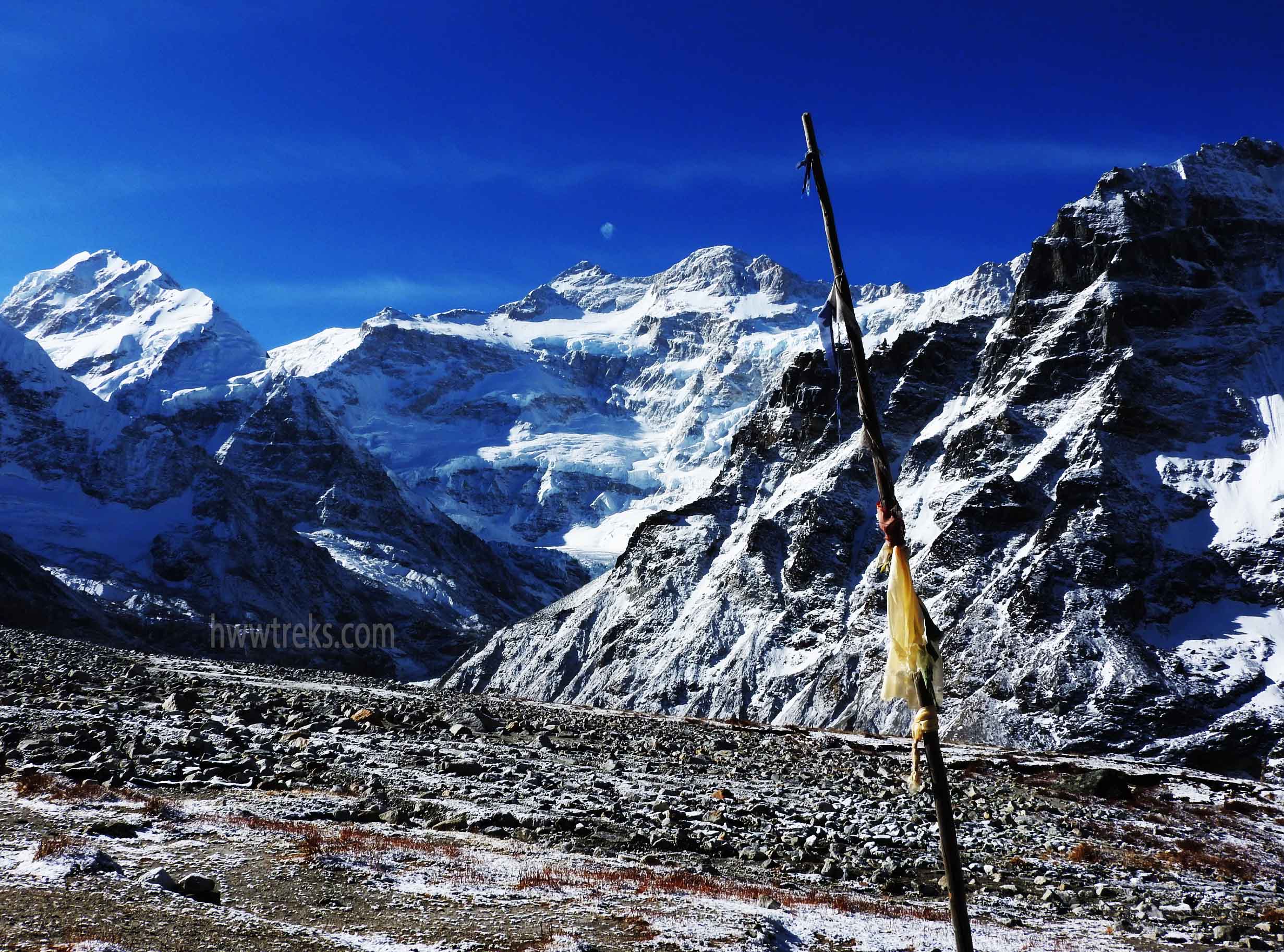
The Kanchenjunga trekking area falls under the Kanchenjunga Conservation Area Project, which is commonly known as KCAP in short form. KCAP plays a vital role in the conservation of this region that is home to the world’s 3rd highest mountain and endangers wildlife and indigenous Himalayan ethnicities such as Sherpa, Rai, Brahman, Chhetri, and Limbu. The World Wildlife Fund (WWF) is running a project on red panda and snow leopard conservation in collaboration with KCAP.
Facts of Kanchenjunga Trek
- Number of days: 18 to 27 days
- Trekking Distance: Approx. 210 km
- The highest point of Elevation: is 5143 m
- Trek Grade: Medium to Demanding
- Required permits: Kanchenjunga Restricted Area Permit and KCAP Permit
- Average cost: USD 60-110 per day
- Accommodation: Teahouse
Highlights of trekking in the Kanchenjunga Area
- Witness Kanchenjunga (3rd highest mountain in the world and 2nd highest in Nepal)
- Explore the diverse flora and fauna of the Kanchenjunga Conservation Area Project (KCAP)
- Opportunity to spot wildlife such as blue sheep, mountain goats, Snow leopards, Musk deer, Red pandas, etc.
- Experience the blend of the hospitality of Nepali and Tibetan culture
- Serenity and spectacular views of giant snowcapped mountains
- Less visited trekking routes
- Typical rural villages and local ethnic groups
- Encounter the high passes such as Sele La Pass (4290 meters), Mirgin La Pass (4480 meters), and Sinelapcha Pass (4646 m).
- Conquer some of the most pristine glaciers of Kanchenjunga (Yalung Glacier and Kanchenjunga Glacier).
Trekking Permits for Kanchenjunga Trek
Every trekker must have valid Kanchenjunga trekking permits to begin their trekking journey to the Kanchenjunga region. There are only two permits required for trekking in Kanchenjunga. They are the Kanchenjunga Restricted Area Permit and the Kanchenjunga Conservation Permit. The Kanchenjunga restricted trekking permit costs USD 20 per person/week for the first four weeks, and beyond that, it will cost USD 25 per person/week. A restricted trekking permit for Kanchenjunga is obtained only from a registered trekking company. The Kanchenjunga Conservation Area Permit (KCAP) costs NPR 3000 per person, which is valid for one-time entry without the limitation of time duration.
Read more about the trekking permit in detail here: Nepal trekking Permit
What are the documents require obtaining Kanchenjunga Restricted Trekking Permit?
Only authorized trekking agencies can apply for the Kanchenjunga trekking permit along with the following documents from Nepal’s Department of Immigration office.
- Copy of Passport
- Copy of valid Visa sufficient to cover trekking days
- Name lists of trekkers
- Outline the Itinerary of the chosen Kanchenjunga trek
- Trekker’s travel insurance
- Start and end trek Dates
How to Reach/Get Kanchenjunga?
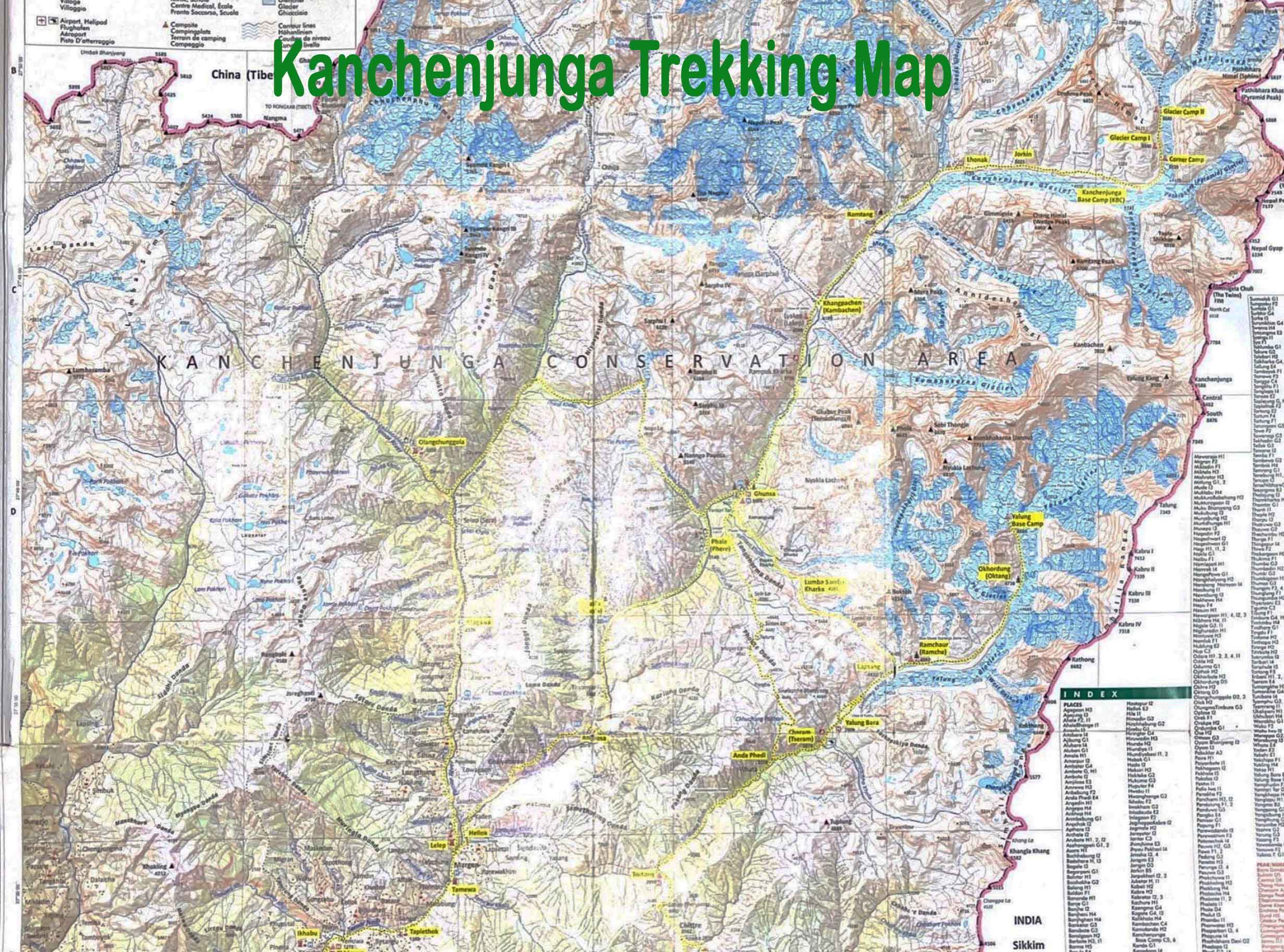
Many of our past trekkers (clients) often asked how to reach the Kanchenjunga Region. In general, there are many starting points for trekking in Kanchenjunga. The starting point for the Kanchenjunga trek depends on your time availability and chosen trek route.
Getting to Kanchenjunga in three ways
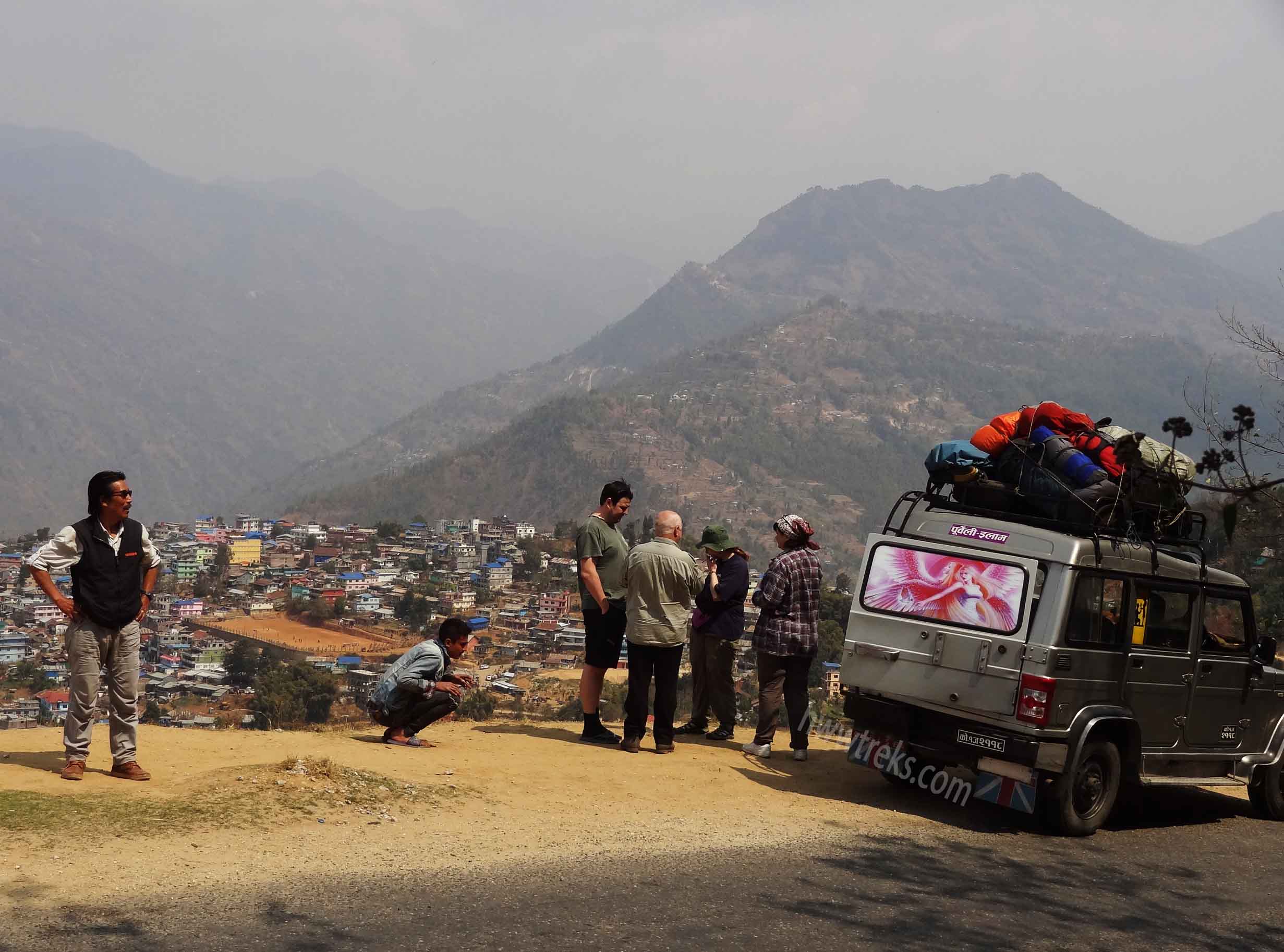
- Kanchenjunga trek from Basantapur
From Kathmandu, there are local buses and Hiace vans available to Dharan and Dhankuta. You can get the ticket at the capital’s well-known bus station, Gongabu. The schedule for the departure area is in the afternoon around 2 pm. It takes about 19 hours by bus and is shorter by Hiace vans. This bus will take a route from Kathmandu to Helle through Chitwan, Itahari, Damak, Dharan, and Dhankuta. If you take a bus in the afternoon, you will reach the next morning around 7 am in Hille. From Hille, it is a 2-hour drive to Basantapur. We suggest you rest that afternoon because you might not have slept well on the night bus. - Kanchenjunga trek from Taplejung
The most preferred Kanchenjunga trek route starts by flying to Bhadrapur, which will take 45 minutes. After getting off the flight, you can drive to Taplejung. After your landing at Bhadrapur, you can drive to Taplejung via Ilam, the heart of the tea plantation area of Nepal. It is a long day of driving, but the road from Ilam to Taplejung (4 to 5 hours) is blacktopped but narrow. Some people stay overnight in Ilam and then drive to Taplejung the next day. Before the trek starts right from the Taplejung Bazaar. But these days everyone takes a local 4x45 Jeep to Ranipul, which takes about 3 and a half hours. From Taplejung to Ranipul, there is a dirt road subject to seasonal weather conditions. On the same day, you can trek to Sekathum by walking for 3 hours. Before Ranipul, there is a small settlement called Tapethok. There is the first of many checkpoints where they will check permits to ensure you have the correct trekking permits. Make sure you do! - Kanchenjunga trek from Suketar
There are weekly flights scheduled from Kathmandu to Suketar Airport, which may look tempting as it cuts out the road travel. But these flights are often canceled at the last minute due to bad weather conditions. So we highly recommend you take the flight to Bhadrapur. More chances to have a flight to Suketar airport If there is a group of trekkers with more than 10 passengers willing to charter the whole flight. If you are lucky enough to have a flight to Suketar then you will reach Sekhathum on the same day.
6 popular Treks in Kanchenjunga Region with their Itineraries
Kanchenjunga region is managed by the Kanchenjunga Conservation Area Project where many treks take place to explore a fine mix of village life and high-altitude Himalayan landscape. If you are a trekking enthusiast and love long treks then this could be the best choice for your next adventure in the Himalayas of Nepal.
Here are the six best treks that you can do in the Kanchenjunga Region.
1) Kanchenjunga Circuit and Drohmo Ri Trek
Kanchenjunga Circuit with Drohmo Ri Trek offers an opportunity to experience trekking above 6000 meters to witness the great views of the surrounding snowy peaks of Kanchenjunga, the third-highest mountain in the world. Many trekkers who are physically fit and love adventuring to off-the-beaten-path choose this trek. This trek will take you through the amazing landscapes of eastern Nepal, where mind-blowing mountain vistas, deep valleys, and lush forests create a breathtaking backdrop.

Outline Itinerary Kanchenjunga Circuit and Drohmo Ri Trek
Day 01:Fly from Kathmandu to Bhadrapur and Drive to Phikkal (1595 m)
Day 02: Drive from Phikkla to Sekhatum (1,509m) via Taplejung, 7-8 hours
Day 03:Sekhathum to Amjilosa (2,498m), 7 hours
Day 04:Amjilosa to Gyabla (2,730m) 4-5 hours
Day 05:Gyabla to Ghunsa (3,595m) 6-7 hours
Day 06:Acclimatization day at Ghunsa
Day 07:Ghunsa to Kambachen (4,145m), 5-6 hours
Day 08:Kambachen to Lhonak (4,800m) 5-6 hours
Day 09:Lhonak to Pang Pema (5,143m) 3 hours
Day 10: Summit to Drohmo Ri (6100m) Return to Lhonak
Day 11: Trek to Ghunsa (3,595m) 6-7 hours
Day 12: Ghunsa to Sele Le (4,290m) 5-6 hours
Day 13: Sele Le to Cheram (3,868m) 5-6 hours
Day 14: Rest Day at Cheram - Explore
Day 15: Cheram to Ramche and afternoon side trek to Oktong, Yalung Base Camp
Day 16: Ramche to Tortong (2,980m) 3-4 hours
Day 17: Tortong to Yamphudin (1,692m) 6-7 hours
Day 18: Drive from Yamphudin to Ilam (800m) via Happukhola (1400m)-7 to 8 hours
Day 19: Drive Ilam to Bhadrapur (91m) – 2 ½ to 3 Hours and fly to Kathmandu – 35 to 40 minutes
Inquiry for KCT with Drohmo Ri Trek
2) Kanchenjunga North Base Camp Trek (KNBC)
The Kanchenjunga North Base Camp Trek is a stunning trekking route located in the eastern region of Nepal. It takes you through the breathtaking landscapes of the Kanchenjunga Conservation Area, which is home to some of the most spectacular scenery and biodiversity in the world. The Kanchenjunga North Base Camp Trek usually takes around 14-16 days to complete, and it's recommended that trekkers have prior experience and a good level of fitness. It's also important to ensure that you're properly acclimatized to the high altitude and to follow the guidance of your guide and local authorities.

Outline Itinerary Kanchenjunga North Base Camp Trek
Day 01: Flight to Bhadrapur and drive to Taplejung. 7-8 hours.
Day 02: Drive to Rani Pool and trek to Sekhathum (1,509m), 2 & half hours.
Day 03: Sekhathum to Amjilosa (2,498m), 4-5 hours.
Day 04: Amjilosa to Gyabla (2,730m) 4-5 hours.
Day 05: Gyabla to Ghunsa (3,595m) 6-7 hours.
Day 06: Acclimatization day at Ghunsa.
Day 07: Ghunsa to Kambachen (4,145m), 5-6 hours.
Day 08: Kambachen to Lhonak (4,500m) 5-6 hours.
Day 09: Lhonak to Kanchenjunga north base camp (5,143m) 4 hours and back to Khambachen 3-4 hours.
Day 10: Kambachen to Ghunsa (3,595m) 4-5 hours.
Day 11: Ghunsa to Amjilosa (2730m), 7 - 8 hours
Day 12: Amjilosa to Rani Pool and Drive to Taplejung (1820m) 7 - 8 hours
Day 13: Drive to Illam (800m) 6-7 hours
Day 14: Drive Ilam to Bhadrapur (91m) – 2 ½ to 3 Hours and fly to Kathmandu – 35 to 40 minutes
3) Kanchenjunga South Base Camp Trek (KSBC)
The Kanchenjunga South Base Camp Trek is a challenging and remote trekking route located in the eastern region of Nepal. The trail takes you through some of the most stunning landscapes in the world, including dense forests, alpine meadows, and towering peaks. You'll have the opportunity to see Kanchenjunga, the third-highest mountain in the world, as well as a variety of other snow-capped peaks and glaciers. The trek is also an opportunity to immerse you in the unique culture and traditions of the local communities, including the Rai and Limbu people. Kanchenjunga South trek usually takes around 12-16 days to complete, and it's recommended that trekkers have prior experience and a good level of fitness. Proper acclimatization to the high altitude is essential, and it's important to follow the guidance of your guide and local authorities throughout the trek.
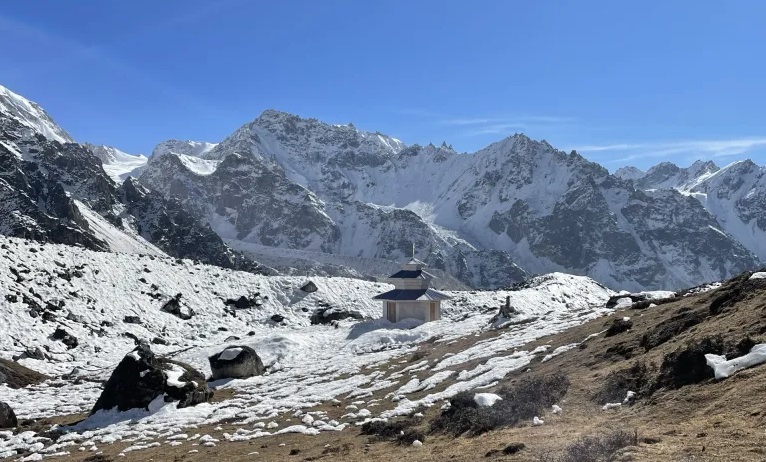
Outline Itinerary of Classic KSBC Trek
Day 01: Fly to Bhadrapur from Kathmandu, drive to Taplejung (1820m)
Day 02: Drive to Taplethok and trek to Hellok (1420m)
Day 03: Trek to Yasang (2150m)
Day 04: Trek to Torangden (2995m)
Day 05: Trek to Cheram (3870m)
Day 06: Trek to Ramche (4580m)
Day 07: Morning hike to Oktong (4730m) and retrace to Cheram
Day 08: Trek to Torangden (2995m)
Day 09: Trek to Yamphudin (2080m)
Day 10: Drive from Yambuding to Illam (800m)
Day 11: Drive to Bhadrapur and fly to Kathmandu.
4) Short Kanchenjunga South Base Camp with new Route trek
This trek starts and exits in Ranipul village of Phaktanglung Rural Municipality in the Kanchenjunga area. This route is getting popular for those trekkers who don’t have enough time to do the whole Kanchenjunga circuit but want to witness Kanchenjunga South Base Camp within a short period of the trek.
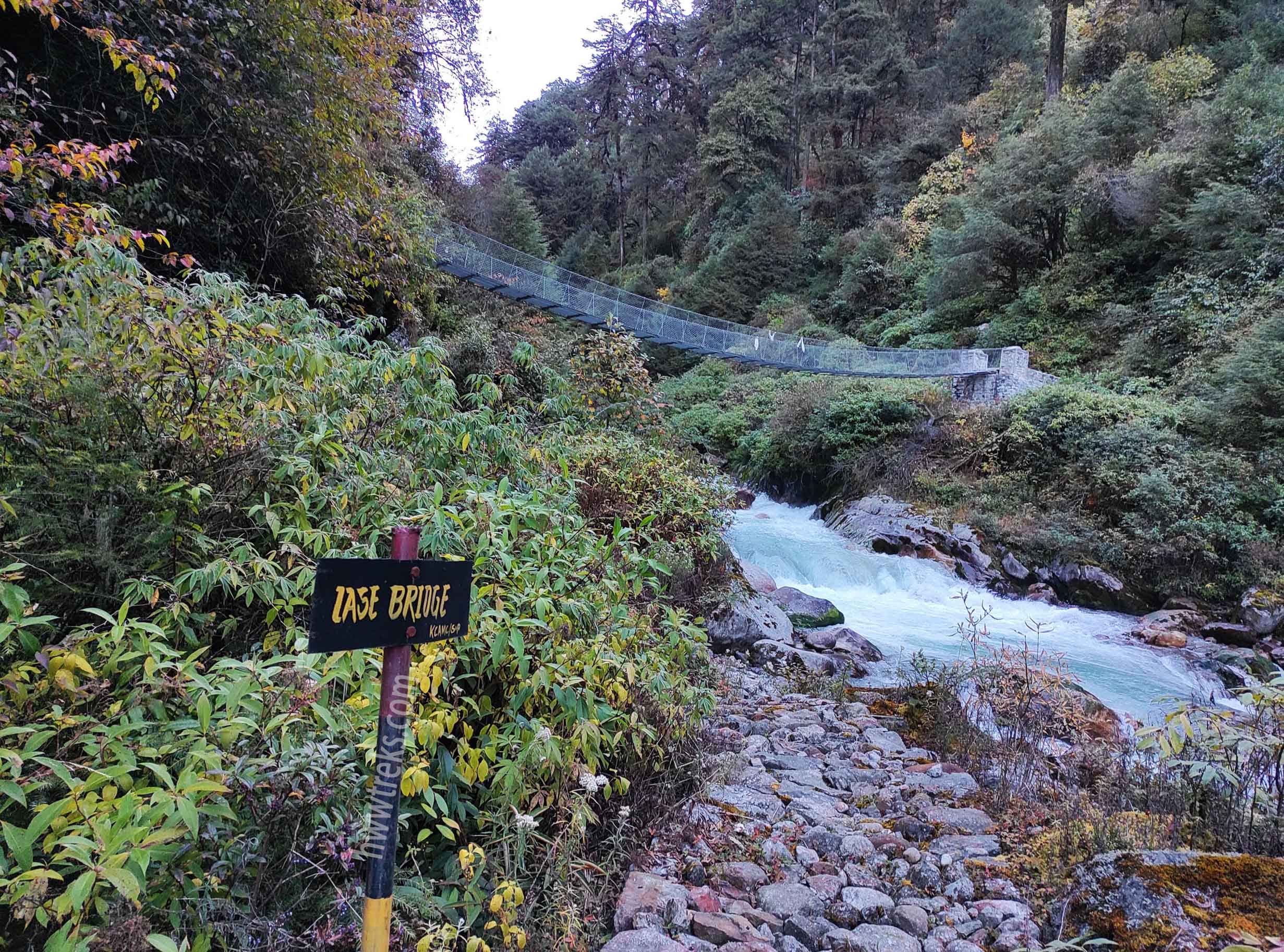
Outline Itinerary of New and Short Base Camp Trek
Day 1: Fly to Biratnagar and drive to Dharan
Day 2: Drive from Dharan to Phungling
Day 3: Drive from Phungling to Ranipul and trek to Lapsetar
Day 4: Trek to Torangden via Yasang
Day 5: Trek to Tseram
Day 6: Trek to Ramche and afternoon hike to Oktang to witness Yalung Glacier and Kanchenjunga South Base Camp
Day 7: Trek to Torangden via Tseram
Day 8: Trek to Ranipul
Day 9: Trek to Phungling
Day 10: Drive from Phungling to Dharan
Day 11: Drive to Kathmandu or Fly from Biratnagar to Kathmandu
5) Kanchenjunga Circuit Trek (KCT)
The Kanchenjunga circuit trek combined both the Kanchenjunga North Base Camp and South Base Camp that is Pang Pema (5,140m) and Oktong (4,580m) respectively. In the past Kanchenjunga trek was possible only by camping but now day tea houses treks are more popular. On the route to Kanchenjunga North Base Camp –Pang Pema, you will see Limbhu and Rai during your first few days and then slowly Sherpa people in the higher places. But on the southern side, you will see settlements only up to Yamphudin. Between Yamphudin to Ghunsa, you will only find tea houses. One of the wildest and unspoiled conservation areas of Nepal where one can relish in nature. You will see local people drinking Tongba which is very popular in this area. Tongba is a wooden pot filled with fermented millet seeds and added with boiled water. You sip the mixture through a special bamboo straw; with tiny filters to keep the seeds out of the drink. This drink is special in the whole Kanchenjunga Trek. The trek usually takes around 18-24 days to complete, and it's recommended that trekkers have prior experience and a good level of fitness. Proper acclimatization to the high altitude is essential, and it's important to follow the guidance of your guide and local authorities throughout the trek.

Outline Itinerary of Kanchenjunga Circuit trek
Day 01: Fly from Kathmandu to Bhadrapur and Drive to Phikkal (1595 m)
Day 02: Drive from Taplejung to Tapethok (3-4 hours) and trek to Sekhatum (1,509m), 2 & half hours.
Day 03: Sekhathum to Amjilosa (2,498m), 4-5 hours.
Day 04: Amjilosa to Gyabla (2,730m) 4-5 hours.
Day 05: Gyabla to Ghunsa (3,595m) 6-7 hours.
Day 06: Acclimatization day at Ghunsa.
Day 07: Ghunsa to Kambachen (4,145m), 5-6 hours.
Day 08: Kambachen to Lhonak (4,800m) 5-6 hours.
Day 09: Lhonak to Kanchenjunga north base camp (5,143m) 4 hours and back to Khambachen 3-4 hours.
Day 10: Kambachen to Ghunsa (3,595m) 4-5 hours.
Day 11: Ghunsa to Sele Le (4,290m) 5-6 hours.
Day 12: Sele Le to Cheram (3,868m) 5-6 hours.
Day 13: Cheram to Ramche and back to Cheram (3,868 m) 7-8 hours
Day 14: Cheram to Tortong (2,980m) 3-4 hours.
Day 15: Tortong to Yamphudin (1,692m) 6-7 hours.
Day 16: Drive from Yamphudin to Ilam (800m) via Happukhola (1400m)-7 to 8 hours
Day 17: Drive Ilam to Bhadrapur (91m) – 2 ½ to 3 Hours and fly to Kathmandu – 35 to 40 minutes
Day 18: Drive Ilam to Bhadrapur (91m) – 2 ½ to 3 Hours and fly to Kathmandu – 35 to 40 minutes
6) Olangchung Gola Trek (OGT)
The Olangchung Gola Trek is a hidden gem of the Kanchenjunga Region, offering a remote and off-the-beaten-path adventure. The trek takes you through stunning alpine forests, picturesque villages, and High Mountain passes, offering spectacular views of the Himalayan mountain range, including Kanchenjunga, Makalu, and Everest. The highlight of the trek is the visit to the village of Olangchung Gola, a unique settlement with a mix of Tibetan and Sherpa cultures, where you can witness the traditional way of life of the local people. The village is located near the Nepal-Tibet border and is the last inhabited village in the region. The trek is challenging and requires a good level of fitness and prior trekking experience. Overall, the Olangchung Gola Trek is a must-do for those seeking an adventurous and authentic experience in the remote and pristine wilderness of Nepal.
Outline Itinerary of OGT
Day 01:Flight to Bhadrapur and drive to Taplejung. 7-8 hours.
Day 02:Drive to Taplethok (1380m) and stay overnight.
Day 03: Trek to Ela Danda (2050m)
Day 04: Trek to Jongin (2600m)
Day 05: Trek to Olangchung Gola (3200m)
Day 06: Rest day at Olangchung Gola
Day 07: Trek Tasa (3600m)
Day 08: Trek Yangma (4160m)
Day 09: Trek Sum Dokma (4550m) / pass camp
Day 10: Trek Ghunsa (3,595m) via Nango La (4800m)
Day 11: Test-explore Ghunsa
Day 12: Ghunsa to Amjilosa (2730m), 7 - 8 hours
Day 13: Amjilosa to Rani Pool and Drive to Taplejung (1820m) 7 - 8 hours
Day 14: Drive to Illam (800m) 6-7 hours
Day 15:Drive Ilam to Bhadrapur (91m) – 2 ½ to 3 Hours and fly to Kathmandu – 35 to 40 minutes
9 Reasons to choose Kanchenjunga for Trekking in Nepal
The Kanchenjunga trek is a challenging and rewarding adventure that offers spectacular views of some of the world's highest mountains, including Kanchenjunga (the third-highest peak in the world), as well as an opportunity to experience the unique culture of the region. Trekking through remote valleys and rugged terrain, hikers encounter traditional villages, Buddhist monasteries, and diverse flora and fauna. The trek also provides an opportunity to escape the crowds of other popular trekking routes in Nepal and enjoy a peaceful, off-the-beaten-path experience in one of the world's most stunning mountain landscapes.
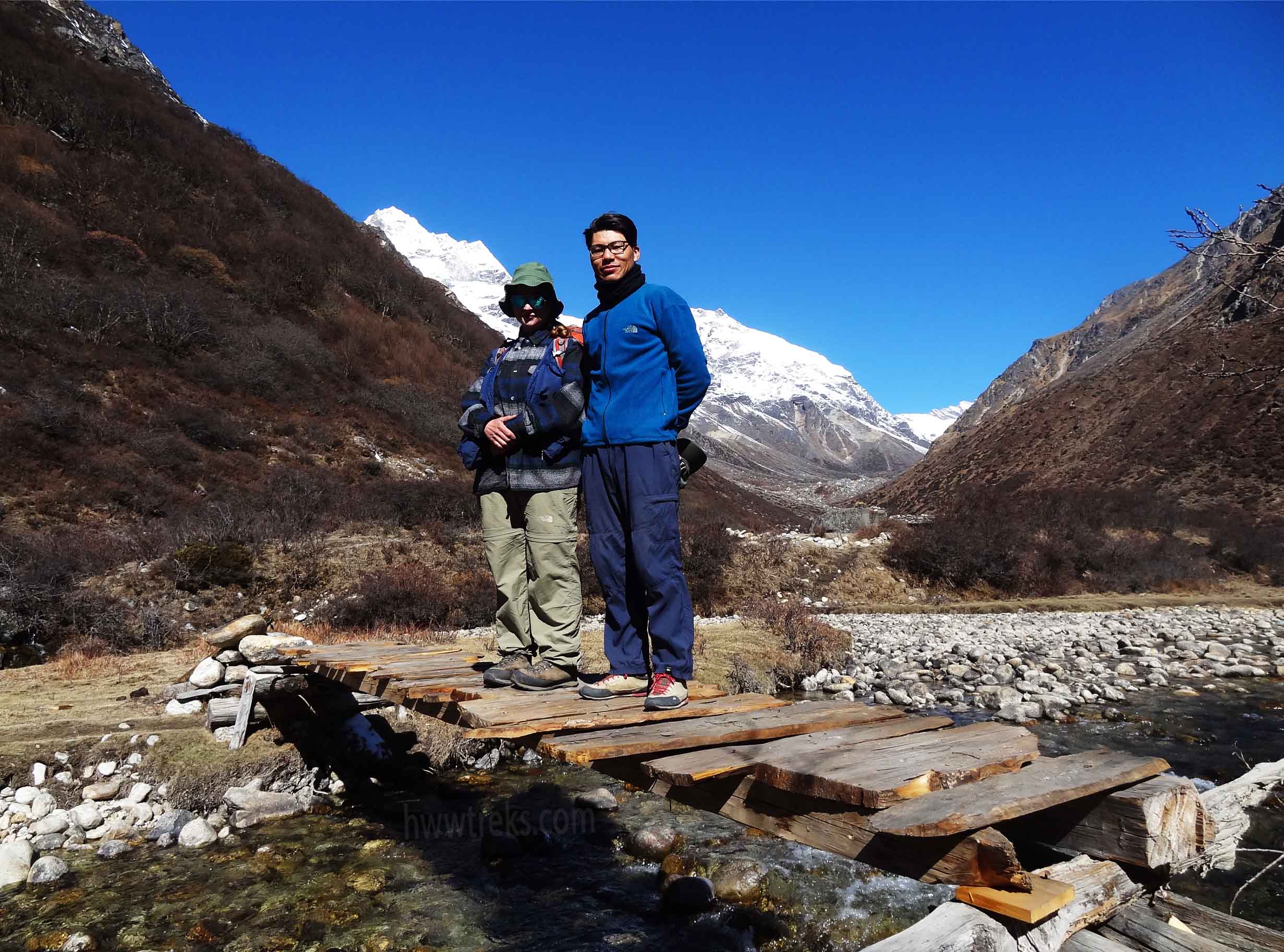
Here are 9 Best Reasons to Choose the Kanchenjunga Trek for Your Next Adventure Trip in Nepal.
1. Less Crowded trekking destination
Because of its remote location in Nepal and the difficulty involved in accessing it from India, the Kanchenjunga region is not much explored by trekkers. It has, therefore, retained much of its pristine beauty. A perfect trekking destination for less crowded trekking lovers.
2. Tea house-based Trek
Camping was the only choice for the Kanchenjunga trek many years ago. Nowadays, tea houses are getting more popular, which replace camping-style treks, and that makes it cheaper for every trekker. You will also have a warm and better sleep after your long day trek.
3. Experience the diverse culture
The Kanchenjunga trek offers an opportunity to experience the rich and diverse culture of the region. Trekking through remote villages and meeting the locals provides a glimpse into their unique way of life, customs, and traditions. The region is home to a mix of ethnic groups, including the Limbu, Rai, Sherpa, and Tibetan people, each with their distinct languages, clothing, and customs. Visitors can explore Buddhist monasteries and learn about their spiritual beliefs, witness colorful festivals and celebrations, and savor the local cuisine. Overall, the Kanchenjunga trek is a cultural immersion that offers a glimpse into the fascinating world of the people who call this remote and stunning mountain landscape their home.
4. Mountaineering Opportunity
Mountaineering in the Kanchenjunga area is a challenging and rewarding experience, attracting climbers from around the world to test their skills against some of the highest peaks in the Himalayas. Kanchenjunga (8,586 m) is the third-highest mountain in the world, and climbing it requires advanced technical skills, physical fitness, and mental toughness. The area also offers several other impressive peaks, including Jannu (7,710 m) and Yalung Kang (8,505 m), which present their unique challenges. Mountaineering expeditions in the Kanchenjunga area require careful planning and preparation, but the breathtaking views and sense of achievement make it a once-in-a-lifetime adventure for those who undertake it.
5. Witness the world’s third-highest mountain
Kanchenjunga, the world's third-highest mountain, is the main destination of this trekking in the Kanchenjunga region. Trekking in this region offers a unique opportunity to witness the awe-inspiring beauty of this towering mountain, as well as its surrounding peaks, glaciers, and valleys. The trek takes hikers through remote and rugged terrain, passing through traditional villages and ancient monasteries and offering glimpses of the unique culture and way of life of the local people. For those seeking a challenging and rewarding adventure, witnessing Kanchenjunga in person is an experience not to be missed.
6. Pristine Scenery of Mountains
The Kanchenjunga area is known for its pristine mountain scenery, which includes some of the world's highest peaks, beautiful glaciers, and vast alpine landscapes. Trekking in this region offers breathtaking views of towering mountains, such as Kanchenjunga, Jannu, and Kabru, surrounded by lush forests, cascading waterfalls, and crystal-clear streams. The region is also home to a variety of flora and fauna, including rare orchids, rhododendrons, and the elusive snow leopard. The pristine beauty of the Kanchenjunga area isuly awe-inspiring and offers a once-in-a-lifetime trekking experience for those who seek adventure and natural beauty.
7. Challenging High Passes
The Kanchenjunga region offers several challenging high passes that require physical fitness, experience, and proper equipment to cross. These passes include the Sele La Pass (4,290 m), the Sinion La Pass (4,660 m), the Mirgin La Pass (4,480 m), and the Lapsang La Pass (5,160 m). Crossing these passes requires careful acclimatization, as the altitude can pose a significant challenge to even experienced trekkers. However, the rewards of completing these high passes are breathtaking views of the surrounding mountains and a sense of accomplishment that comes with conquering some of the most challenging terrains in the world.
8. Authentic and Warm hospitality
The Kanchenjunga trek is renowned for its authentic and warm hospitality. Trekking through remote villages, hikers are welcomed with open arms by locals who are eager to share their culture and way of life. Trekkers are often invited into homes for meals, offered comfortable accommodations, and greeted with genuine kindness and hospitality. The people of the Kanchenjunga region are known for their generosity and warmth, making the trek a truly memorable and enriching experience. Whether sipping tea with a local family or sharing a laugh with a trekking guide, the authentic and warm hospitality of the Kanchenjunga trek is sure to leave a lasting impression.
9. Encounter Both North and South Base Camp in a single Trek
It is very rare to experience the same mountain from different sides within a one-time trek. Trekking to both base camps of Kanchenjunga North and Kanchenjunga South in a single trek is a challenging and unforgettable adventure that takes hikers through some of the most remote and beautiful landscapes in the world. This trek is perfect for adventure seekers looking for an off-the-beaten-path experience in the heart of the Himalayas.
Major places to visit while you are trekking in Kanchenjunga Region
The Kanchenjunga region in Nepal offers a plethora of must-visit places for nature and adventure enthusiasts. The Kanchenjunga Conservation Area, a UNESCO World Heritage Site, is home to a wide range of biodiversity, including rare species such as snow leopards, red pandas, and Himalayan black bears. Here are 12 major places you should consider visiting:
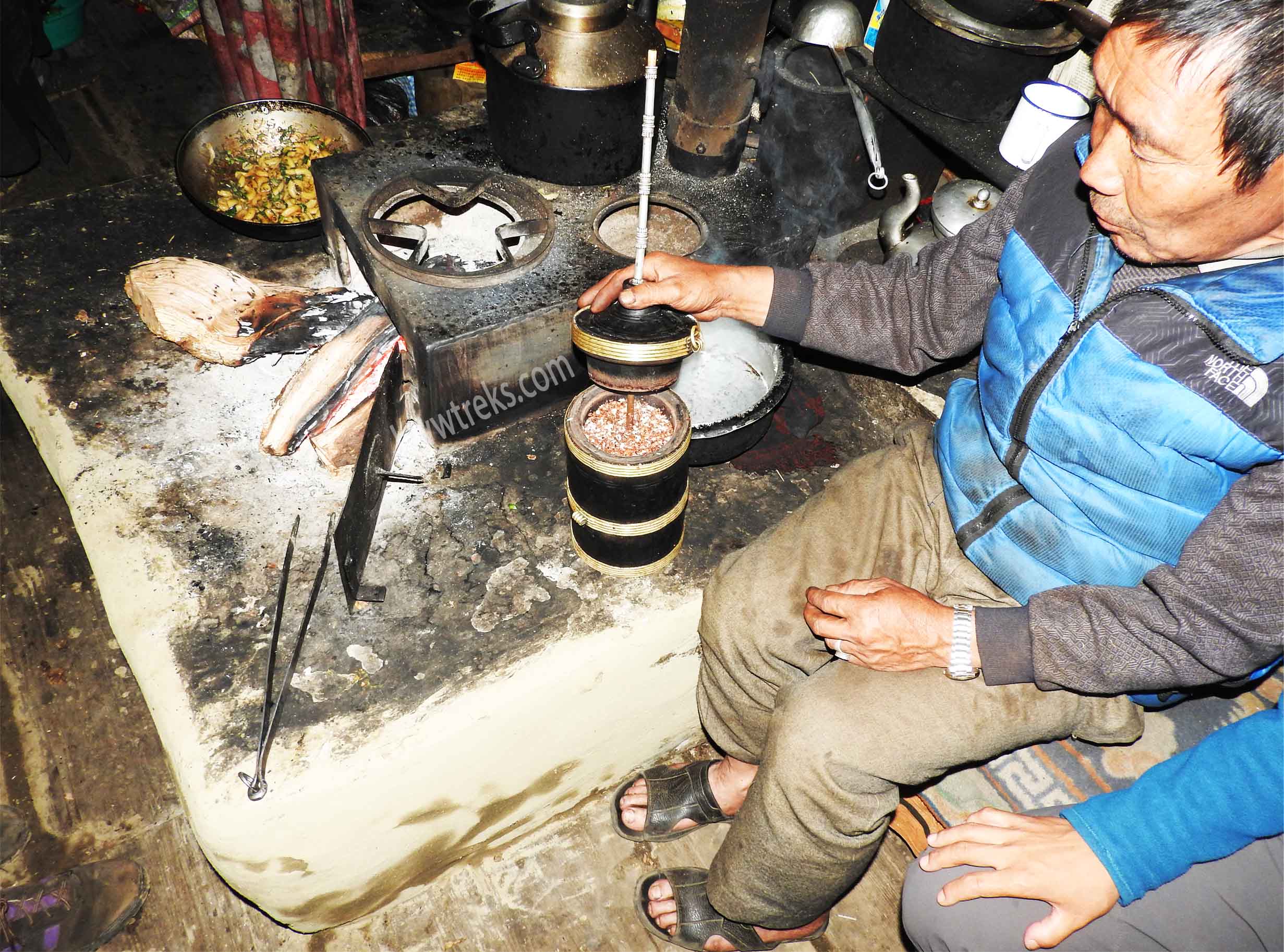
1: Yalung Base Camp:
The Yalung Base Camp, sometimes also referred to as the "Kanchenjunga South Base Camp," is located at a height of 4700 meters from sea level. This camp is considered more remote and less traveled than the northern base camp, making it ideal for trekkers seeking a more off-the-beaten-path adventure. This base camp is popular for morning and evening viewpoints from where you will witness stunning peaks and landscapes in the Himalayas. The camp offers a magnificent panorama of Kanchenjunga, the third-highest mountain in the world, along with other towering peaks and dramatic terrains.
2: Pangpema or Kanchenjunga North Base Camp:
Pangpema, or Kanchenjunga North Base Camp, is the same viewpoint located at an altitude of 5,143 meters and offers a stunning view of the northern Kanchenjunga peak and its surrounding glaciers. After spending one night in Lhonak, most of the trekkers start their hike to Pangpema early in the morning because there is no teahouse or guesthouse to stay overnight. It takes 3-4 hours to walk from Lhonak. It is challenging and requires physical fitness and good acclimatization, but the experience is undoubtedly rewarding, making it a must-visit destination for adventure seekers and nature lovers alike.
3: Ghunsa:
Ghunsa village is a small village located in the northern region of Kanchenjunga, en route to Kanchenjunga North Base Camp, that offers a glimpse into the local culture and lifestyle of Sherpa. In the past, the main occupation of people here was animal husbandry, where they spent summertime in the higher altitude and returned to the village in the winter season. In Tibetan, “Ghunsa” means winter (Ghun) settlement (Sa). This village is home to a small population of around 200 people. The village is known for its stunning views of the surrounding snow-capped Himalayan mountains, including the iconic Kanchenjunga peak, which is the third-highest mountain in the world. The village is a popular stopover for trekkers and climbers on their way to the Kanchenjunga Base Camp and offers basic facilities such as guesthouses and a few small shops.

4: Jannu Base Camp:
Jannu Base Camp is a remote and scenic campsite located at an altitude of 4,800 meters in the west of Kanchenjunga. The trek to Jannu Base Camp is an adventure in itself, with breathtaking views of the Himalayas, where trekkers do a side trek from Kambachen when they are having an acclimatization day. It serves as the starting point for climbers seeking to summit the majestic Jannu Peak (also known as Khumbakarna Himal), which stands at a towering height of 7,710 meters.
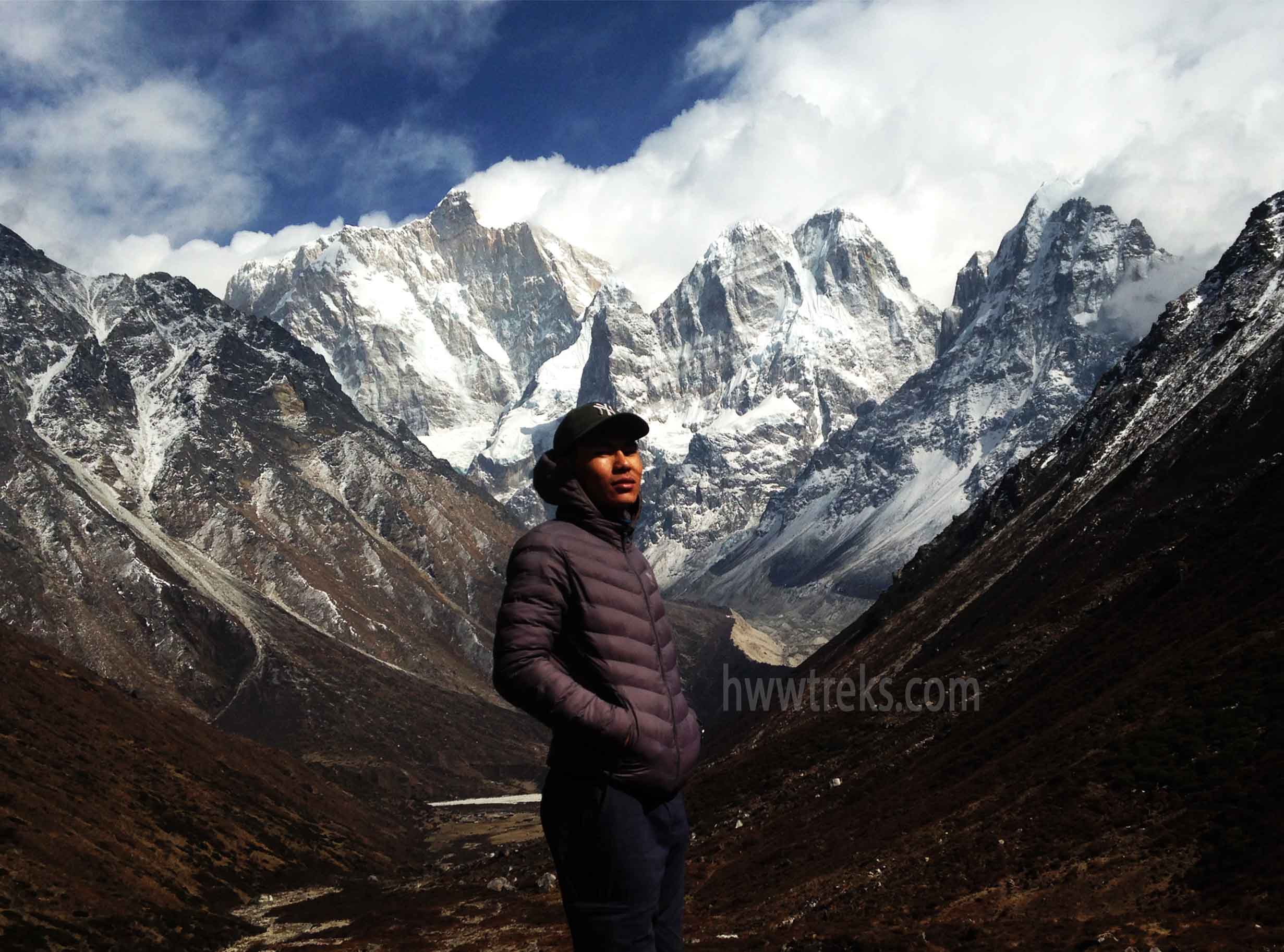
5: Lhonak:
Lhonak is the last settlement of the Kanchenjunga North Base Trek, which is surrounded by high mountains, glaciers, and icy lakes. It used to be a summer dwelling place for shepherds who looked after the yaks, jopke, goats, and sheep. But nowadays there are few houses built for commercial purposes where trekkers can stay overnight before heading to Pangpema.
6: Olangchung Gola:
This traditional Sherpa village offers a unique insight into the culture and way of life of the local community.
7: Sele La Pass:
This high mountain pass offers stunning views of the surrounding landscapes and is a popular spot for trekkers.
8: Ramche:
Ramche is a picturesque village that offers a stunning view of the Yalung Glacier and the surrounding peaks.
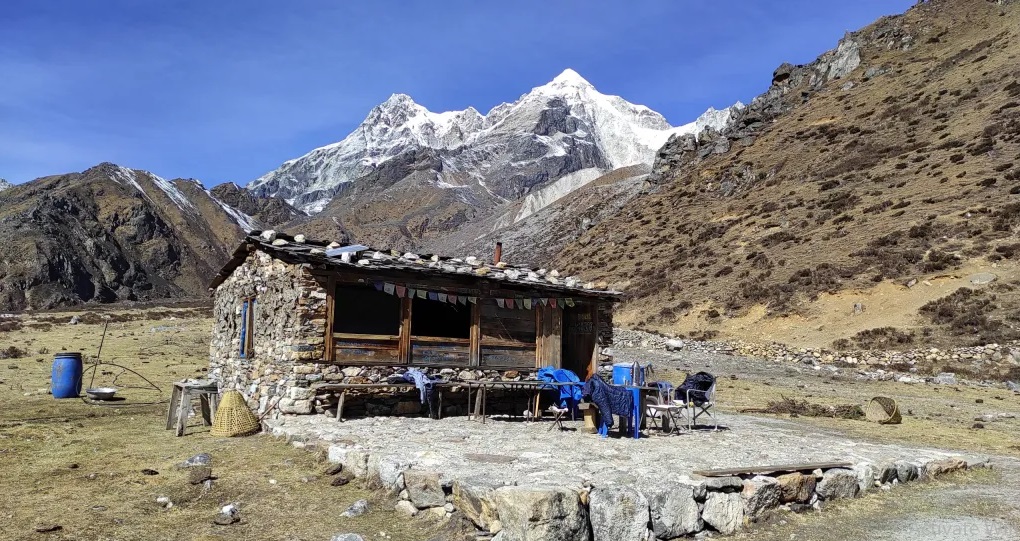
9: Oktang:
Oktang is a high-altitude lake located at an altitude of 4,730 meters and is surrounded by stunning views of Kumbhakarna, Kirat Chuli, and other mountains.
10: Yalung Glacier:
The Yalung Glacier is a large glacier located in the Kanchenjunga mountain range of the eastern Himalayas, spanning across both Nepal and India. It is approximately 22 kilometers long and covers an area of about 75 square kilometers. The glacier is fed by several smaller glaciers and snowfields, and its meltwater feeds into the Yalung River, which eventually joins the Tamur River. The Yalung Glacier is an important source of freshwater for the surrounding region and provides a habitat for a variety of wildlife, including snow leopards, Himalayan tahr, and musk deer. However, like many glaciers around the world, the Yalung Glacier is experiencing the effects of climate change, with its volume and area decreasing over time.
11: Yamphudin:
Yamphudin is a village located in the Taplejung district of Nepal. Situated at an altitude of 2,080 meters above sea level, the village is surrounded by beautiful mountains and dense forests. Yamphudin is a predominantly agricultural community, with locals farming crops such as maize, millet, and potatoes. The village is also home to several ethnic groups, including the Limbu, Rai, and Sherpa people, each with their own unique cultures and traditions. Despite being relatively remote, Yamphudin has access to basic amenities such as schools, health centers, and markets, making it a vital hub for the surrounding communities. The village is also a popular overnight place on the Kanchenjunga South Trek route, offering breathtaking views of one of the world's tallest mountain ranges.
12: Taplejung:
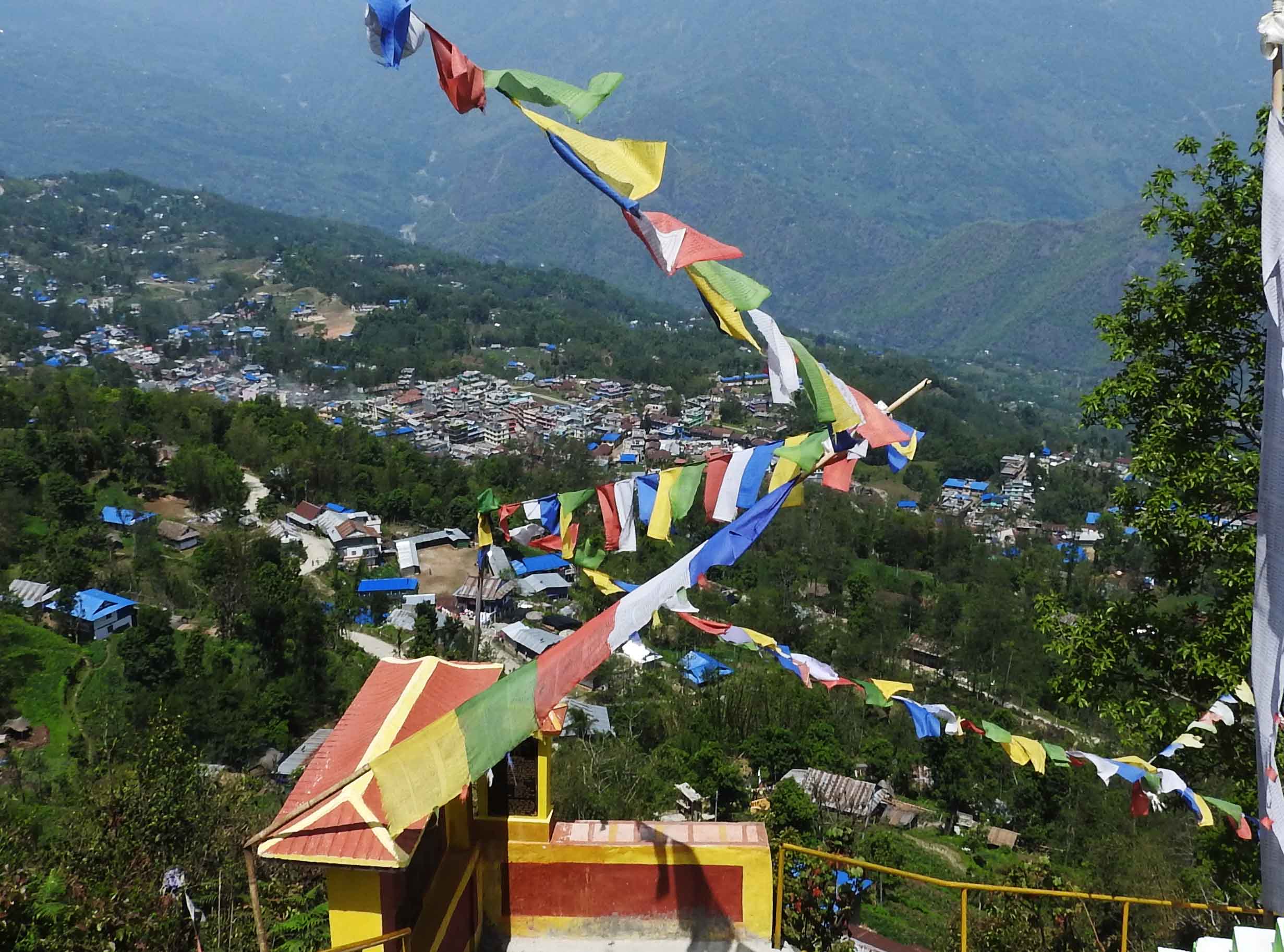
Taplejung is a popular gateway for trekking and mountaineering in the Kanchenjunga region. Taplejung is a district located in the eastern part of Nepal. It is one of the most remote and isolated districts in the country, with rugged terrain and difficult access. The district is bordered by China to the north and India to the east and is home to a diverse range of ethnic groups, including the Limbu, Sherpa, Rai, and Tamang. The district is known for its natural beauty, with stunning mountain views, forests, and rivers.
Overall, Kanchenjunga offers a wide range of places to visit, each offering a unique experience of the region's natural beauty and cultural heritage.
Variation of Kanchenjunga Trek
The Kanchenjunga Region is also popular for the Great Himalayan Trail or GHT. Some trekkers prefer to start their GHT trek from Kanchenjunga, and others start from far-west Nepal and finish here. Besides GHT treks, a few trekkers cross the Lumba Sumba Pass and continue to Makalu Base Camp or trek down to Tumlingtar.
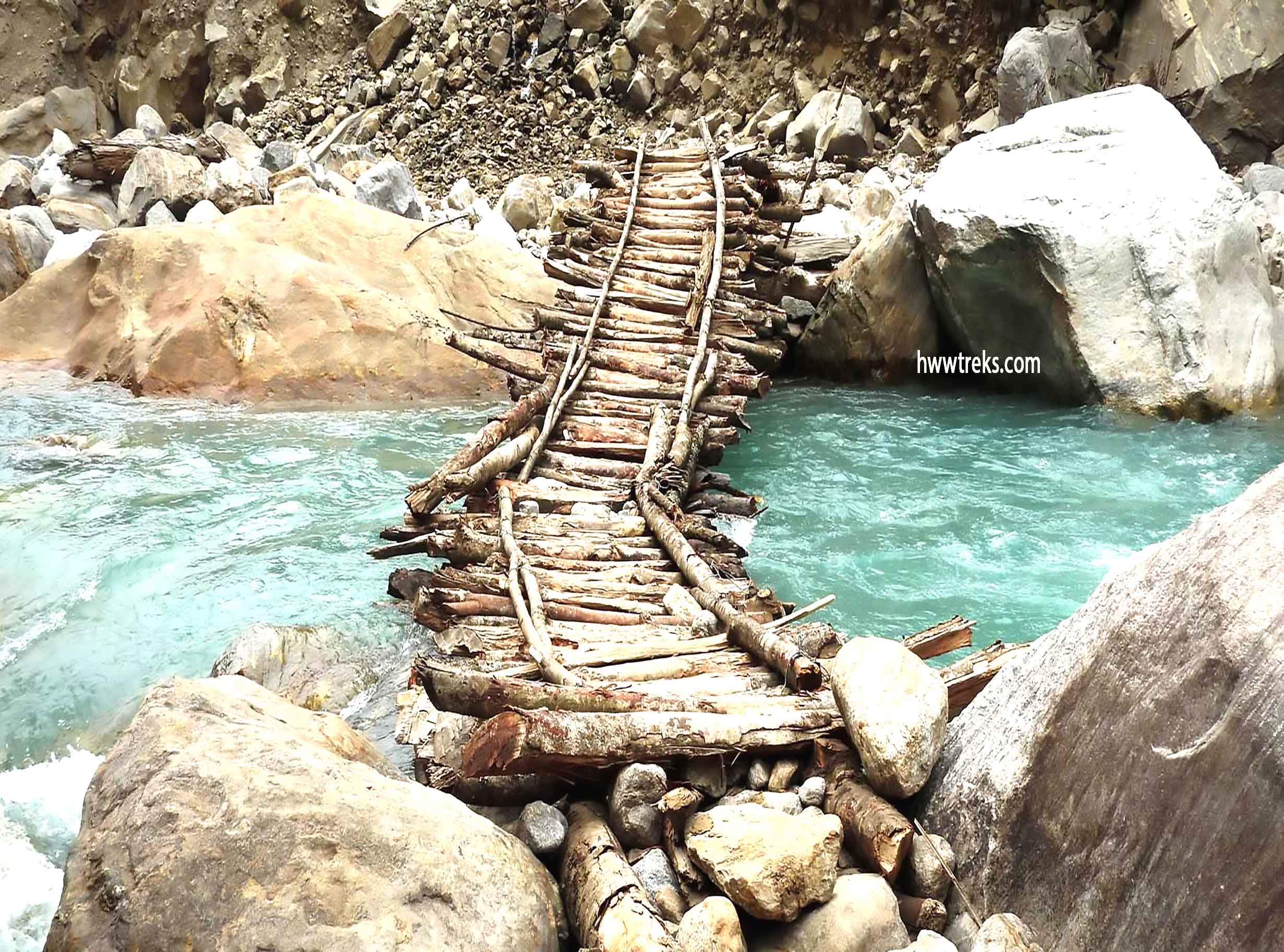
Lumba Sumba Trek
Lumba Sumba Pass Trek is part of the Great Himalayan Trail (GHT), which connects two trekking regions of Kanchenjunga and Makalu in eastern Nepal. This trek is less visited in Nepal because of the extreme remoteness, and it is possible only with a camping trek. Himalayan Wander Walkers organize Lumba Sumba Trek by providing a veteran camping trek crew to make your dream trek a real Himalayan trip. This trek needs really good preparation. The best time to do the Lumba Sumba Pass Trek is from April to May in spring and from late September to mid-November in autumn. Every year during November, the Futuk festival is celebrated in Olangchung Gola.
Outline Itinerary of Lumba Sumba trek
Day 1: Flight from Kathmandu to Bhadrapur (Flight) and Drive to Ilam
Day 2: Drive from Ilam to Taplejung
Day 3: Drive from Taplejung to Rani Pul (1380m) and Overnight at Lelep (1860m)
Day 4: Lelep To Illa Danda (2051 m) – 7 Hours
Day 5: Illa Danda To Selep Kharka (2525m) – 6-7 hrs
Day 6: Selep Kharka To Olangchung Gola (3208m) – 7 hrs
Day 7: Acclimatization Day
Day 8: Olangchung Gola to Upper Langmale (3893m) – 7 hrs
Day 9: Upper Langmale to Lumba Sumba Pass Camp (4748 m) - 6 hrs
Day 10: Lumba Sumba Pass Camp To Chauri Kharka (4598m) – 10 hrs
Day 11: Chauri Kharka To Thudam (3500m) – 7 hrs
Day 12: Thudam To Kharka (2877m) – 6 hrs
Day 13: Kharka To Chyamtang (2229m) – 6 hrs
Day 14: Chyamtang to Hatiya (1595m) – 6 hrs
Day 15: Hatiya To Gola (1128m)– 6 hr
Day 16: Gola to Hedangna Gadi (1179m) – 7 hrs
Day 17: Trek from Hedangna Gadi To Num and Drive To Tumlingtar (1020m) – 6 hrs
Day 18: Fly from Tumlingtar To Kathmandu 1300m) – 50 mins
Best time/season for Kanchenjunga Trek
The best season to trek Kanchenjunga is from March to May in the spring season or October to November in the autumn season. During these months, the weather is usually clear and dry, providing excellent views of the mountains, and the temperature is also moderate, making it easier for trekkers to navigate the trails.
In the spring season, the trek offers a vibrant and colorful landscape, with blooming rhododendrons and other flowers, while in the autumn season, the clear skies provide stunning views of the mountains. However, it's essential to note that during the monsoon season (June to September), the region experiences heavy rainfall, which can make the trails challenging and hazardous to trek.
Telephone, Internet and Electricity availability in Kanchenjunga Region
Internet, electricity, and phone connections in the Kanchenjunga area are limited and not widely available. While some lodges and teahouses may have electricity and phone connections, the quality of the service may not be reliable or consistent.
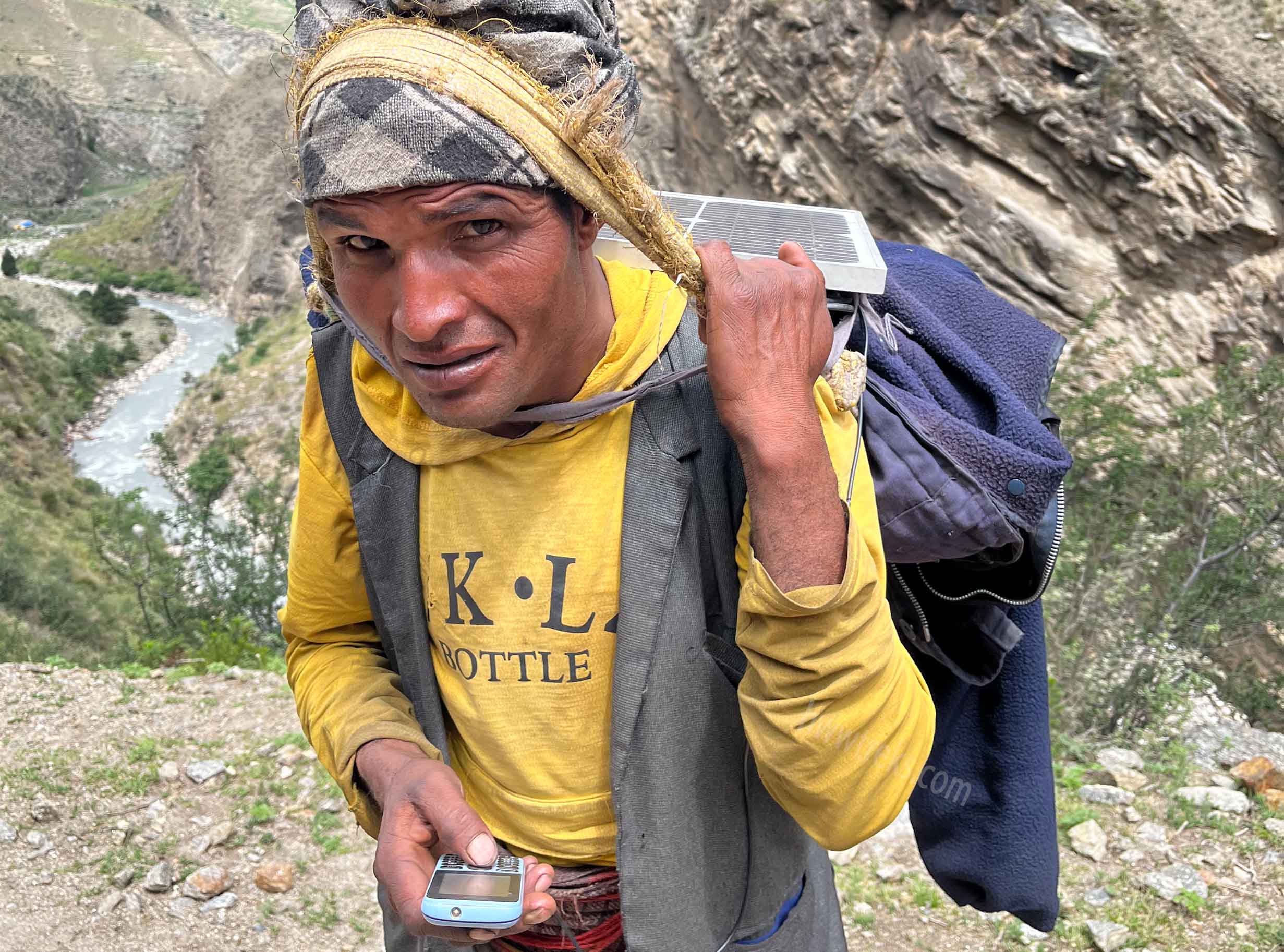
Regarding internet connectivity, Wi-Fi or mobile internet 3G services are available till Amjilosa of the North Base Camp route and Lapsetar and Yamphuding of the South Base Camp route. Beyond these places, mobile data and Wi-Fi connectivity are not available at all.
Similarly, the electricity supply can be intermittent, and power outages are common in the Kanchenjunga area. The lodges and tea houses usually use solar or hydro-powered energy sources to generate electricity, and they may not be available 24/7. Therefore, we (Himalayan Wander Walkers) recommend carrying a power bank, spare batteries, and a satellite phone for emergencies.
When it comes to phone connections, there are limited options available. Mobile phones work till Ghunsa. Thereafter there is no signal till Pangpema of Kanchenjunga North Base Camp. Likewise in Kanchenjunga South Base Camp, where the mobile network is available till Ramche, the last overnight place of the North Base Camp trek. If you are looking for a SIM card for your mobile phone connection, then we suggest the NTC or Namaste SIM card, which has maximum coverage compared to Ncell. The most reliable option is to use a satellite phone, which is available for rent in some areas.
Overall, it's important to be prepared for limited access to the internet, electricity, and phone connections when trekking in the Kanchenjunga area.
Tea house and Lodges in Kanchenjunga Region

Tea house-based trekking is getting more popular in the Kanchenjunga region, which helps to cut down on the cost of trekkers replacing the previous camping trek. It was hard to find lodges with basic facilities like simple food and a room to sleep in before 2015, and camping was the only option for trekkers to reach Kanchenjunga base camp. Later on, the number of trekkers increased, and the local people found an opportunity in mountain tourism by running a tea house for trekkers to stop over during the journey to the world’s 3rd highest mountain, Kanchenjunga.
Room in Tea House:
Nowadays every trekking stopover on the Kanchenjunga trekking route has teahouses that welcome trekkers after a day-long trek, providing meals and lodging services. Some places like Ghunsa, Yamphudin, and the lower route provide attached rooms where you have your toilets inside the room. When you trek higher than Ghunsa to Pangpema, you will have clean and nice rooms, but toilets and showers are outside your rooms. Every room has at least two beds to accommodate more travelers, and some rooms have 3 to 4 beds also. During the peak season, those who prefer to take a single will find it difficult, and you need to share with others.
Food in Tea House:
You will find almost all the food items that you have experienced in other trekking regions of Nepal, like Annapurna, Everest, and Langtang. They offer a variety of potatoes, rice, and noodle dishes, as well as soup and seasonal vegetables. Beers and local spirits are often available, but that will be at your own cost. A variety of cereals, bread, and egg dishes are generally available for breakfast. There are also snacks available, such as basic biscuits, chocolate, and soft drinks, and in some areas, you will find fresh fruit in season.
Top Tips for trekking in Kanchenjunga Region
- Choose the clockwise Kanchenjunga Trekking Route for better acclimatization
- Hire an experienced Trekking Guide who can speak Tibetan, Nepali, and Your preference language
- If you don’t have enough time, then never choose Kanchenjunga Circuit Trek
- Never plan to trek Kanchenjunga during the monsoon and winter seasons.
- The Kanchenjunga Circuit Trek is highly recommended only if you have a month in Nepal.
- Choose a local and accredited Nepalese trekking Agency
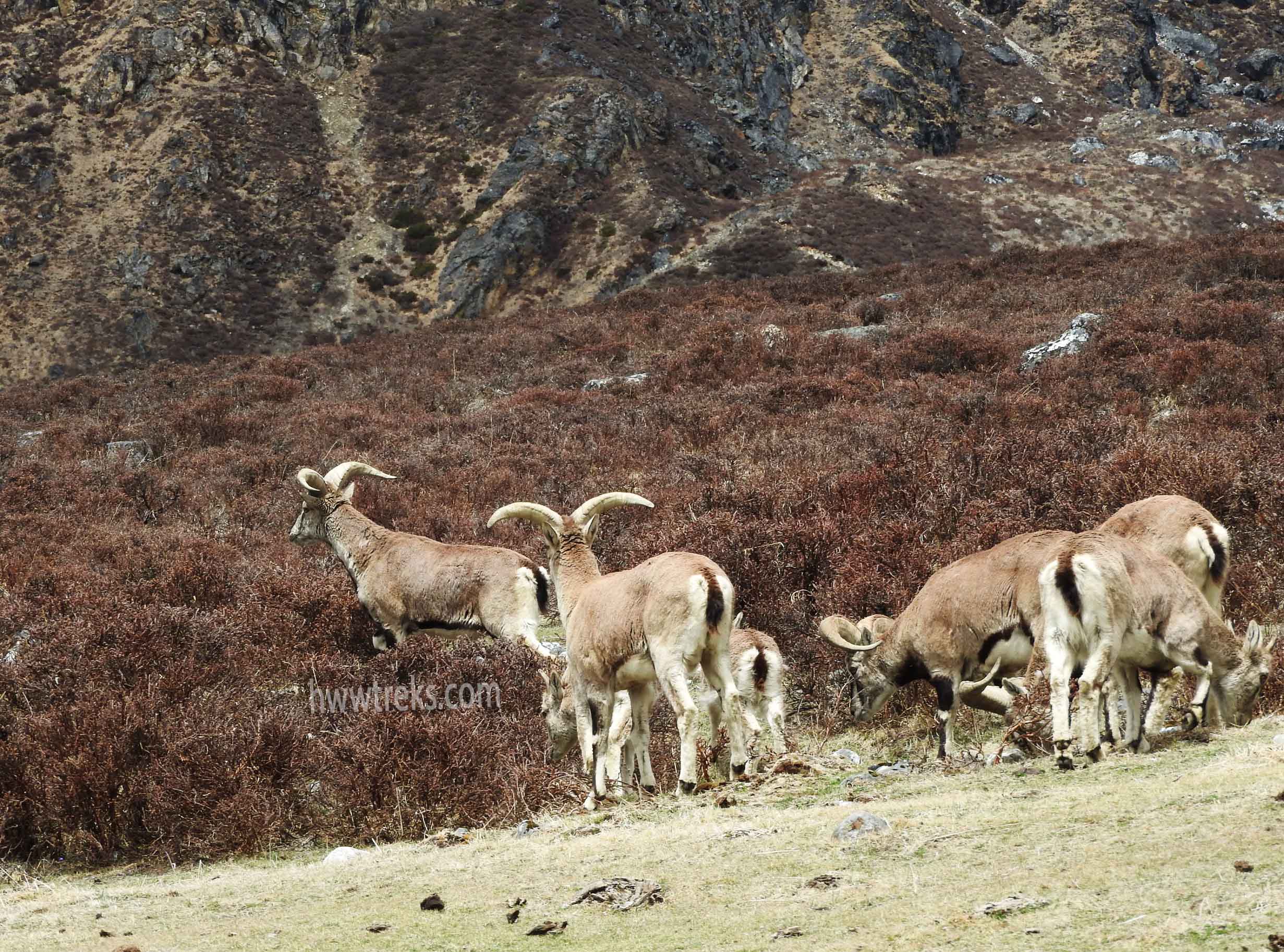
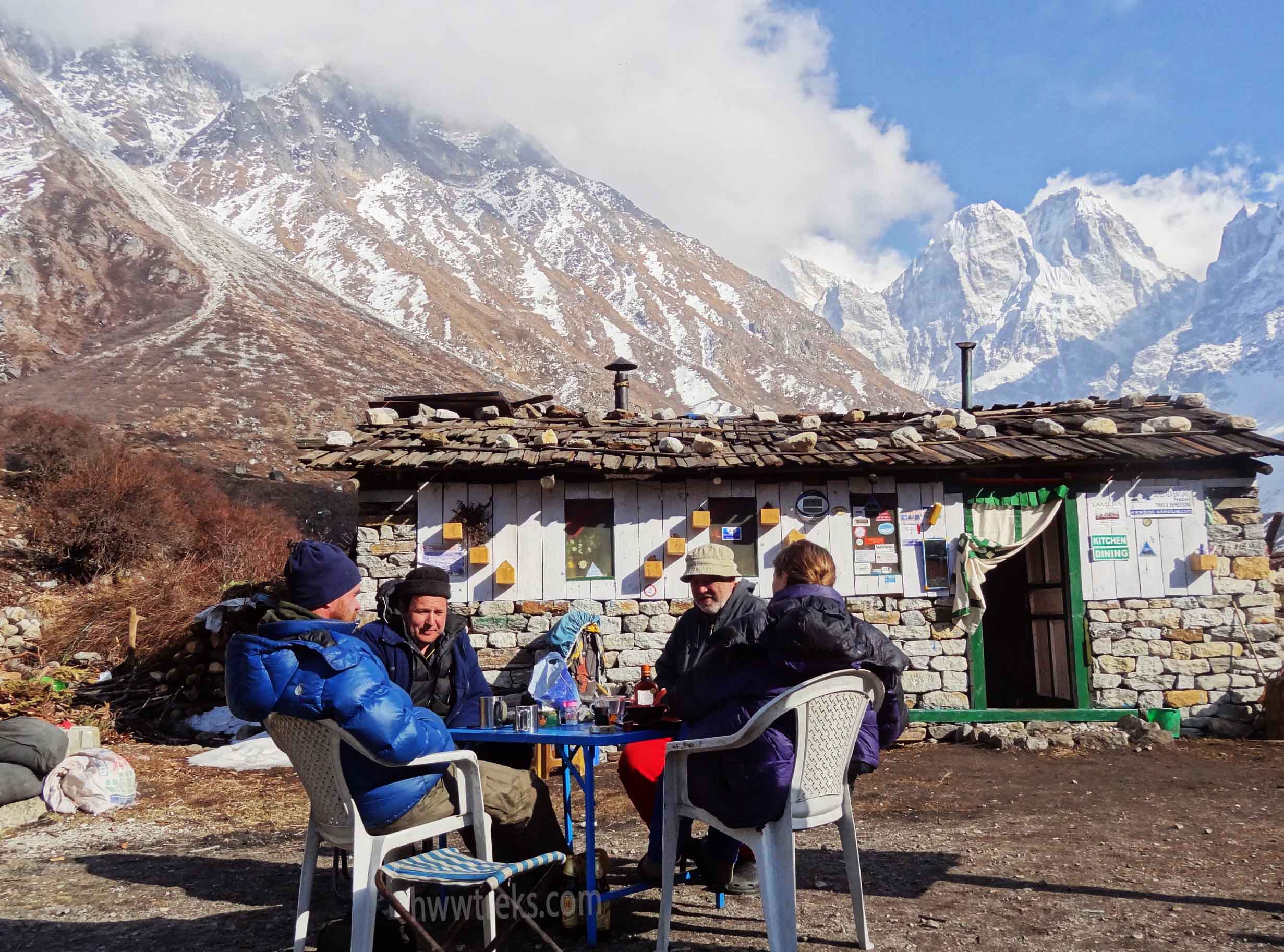
8 must-read books before planning your trek to Kanchenjunga
- Kanchenjunga the Untrodden Peak by Charles Evans.
- The Hard Years by Joe Brown
- The Kanchenjunga Adventure by Frank Smythe
- Round Kanchenjunga by Douglas Freshfield
- Living on the Edge: The Winter Ascent of Kanchenjunga Cherie Bremer-Kamp
- Kanchenjunga: First Ascent from the North-East Spur by Col Narinder Kumar
- Kangchenjunga Himal and Kumbhakana by Jan Kielkowski
- The Ascent of Rum Doodle by WE Bowman
Conclusion of Trekking in Kanchenjunga
Trekking in Kanchenjunga offers all trekkers the opportunity to encounter its unexplored pristine beauty of nature and the diverse cultures of different ethnic groups. Therefore, the Kanchenjunga trek is a perfect choice for trekking enthusiasts who are looking for challenging, adventurous, and spectacular treks in the world. The Kanchenjunga trek still has high and wild nature where you will meet very few other trekkers compared to the Annapurna, Everest, and Manaslu regions.
Review of Kanchenjunga Trek
Review Title: Exceptional Trekking Experience with Himalayan Wander Walkers, 3rd Time!
Kanchenjunga Trek Date: September 2024
I recently completed my third trek with Himalayan Wander Walkers, this time to Kanchenjunga Base Camp. Once again, I am deeply impressed by their exceptional service and professionalism. Every journey with them has been marked by meticulous planning, personalized care, and a strong emphasis on safety.
Despite adverse weather conditions, Dawa and his team provided constant monitoring and support, ensuring a safe and enjoyable trek. Their honesty, integrity, and dedication set them apart from other trekking agencies in Nepal.
Throughout our treks, the friendships formed have been a highlight, adding a personal touch to the incredible experiences. If you’re considering a trekking adventure in Nepal, I highly recommend Himalayan Wander Walkers for unforgettable memories and lifelong friendships. I look forward to many more adventures with them.
Jiakai Li (Australia)
My Kanchenjunga trek was a truly unforgettable adventure. Our trek was organized by Dawa from Himalayan Wander Walkers, and Pasang was our guide, who speaks the Tibetan language all the time and helps us to interact with locals. The trek is challenging but rewarding, with ample opportunities for wildlife sightings and interacting with friendly locals. Overall, the Kanchenjunga trek is a must-do for any serious trekker looking to experience the beauty and diversity of the Himalayan region. I strongly recommend Himalayan Wander Walkers for trekking in Kanchenjunga.
Karel Novak (Czech Republic)
Read our More reviews here: TripAdviser/hwwtreks
Frequently Asked Questions
Find answers to common questions about our services
The Kanchenjunga Region trek is considered moderately to challenging, with the primary challenge being high altitude up to 5,143 meters. While no technical mountaineering skills are required, the trek involves long daily walks (6-8 hours), steep terrain, and remote paths. Good physical fitness and proper acclimatization are essential for a successful and safe trek.
Yes, a licensed guide is mandatory for Kanchenjunga trekking as per government regulations. The remote and rugged terrain makes navigation challenging, and guides ensure safety, proper acclimatization, and cultural insights. They also handle permits, emergencies, and weather-related itinerary changes.
You'll stay in basic teahouses and lodges in lower villages like Taplejung, Chirwa, and Ghunsa, offering simple rooms and traditional meals. In higher, remote areas, camping is required with tents, sleeping bags, and meals provided by trekking agencies. All accommodations offer authentic cultural experiences with local communities.
Yes, all Kanchenjunga region treks can be customized to meet your preferences. We can modify the itinerary to shorten or extend the trek, add rest days, or include specific destinations like monasteries and villages. Whether you want to focus on the North or South Base Camp, or combine both routes, we'll tailor the experience to your needs and fitness level. "Customize Your Trip"
Kanchenjunga North Base Camp: 16-18 day trek focusing on the northern route via Ghunsa valley, featuring Pangpema base camp at 5,143m.
Kanchenjunga South Base Camp: 14-16-day trek through the southern route via Yalung valley, reaching the south base camp with stunning sunrise views.
Kanchenjunga Circuit Trek: 18-24 day comprehensive trek combining both north and south base camps with high passes for experienced trekkers.
Kanchenjunga Circuit Trek with Dhromo Ri: 24-26 day comprehensive trek combining both north and south base camps along with majestiv Dhromo Ri and views from it.
Lumba Sumba Pass Trek: Remote 18-20 day trek crossing the challenging Lumba Sumba Pass at 5,177m, connecting Kanchenjunga with the Makalu region.
Yes, internet access is available during the Kanchenjunga Region trek, though it's limited and inconsistent. WiFi is available in some teahouses in lower villages like Taplejung, Chirwa, and Ghunsa. However, connectivity becomes increasingly sparse and unreliable at higher elevations. Mobile network coverage is available in some areas, but data speeds are slow.
Trekking in the Kanchenjunga Region costs from $2,500.00 (All-inclusive price) per person. However, the total cost depends on several factors, including season (peak season costs more than off-season), service level, transportation (flight or land transport), guide and porter ratio, and many more. All packages typically include permits, guide, accommodation, meals during trek, and transportation to/from the trailhead. Contact us for a customized quote based on your specific preferences and travel dates.
Trekking in the Kanchenjunga Region requires two essential permits. The Kanchenjunga Conservation Area Permit (KCAP) and the Restricted Area Permit (RAP). All permits must be arranged through licensed trekking agencies only, as independent applications are not allowed in this restricted area.
For the trekking in the Kanchenjunga region, essential gear includes mountaineering boots, crampons, a harness, a helmet, an ice axe, a down jacket, waterproof layers, warm gloves, glacier glasses, and a 4-season sleeping bag. Technical equipment, such as ropes, is provided by climbing companies. Many items can be rented in Kathmandu or Namche Bazaar. Read more about peak climbing gear and equipment.
No questions found matching your search. Try different keywords or browse all questions above.
